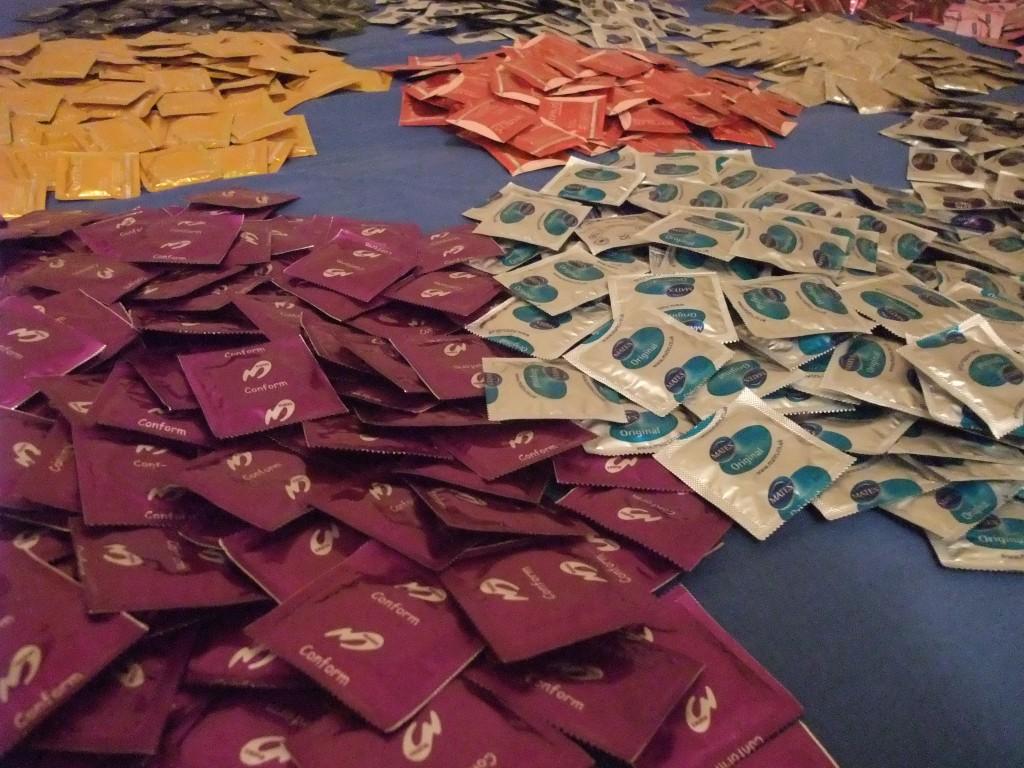Condoms are proven to prevent pregnancy and sexually transmitted diseases—got it? I was hoping that was an unnecessary statement for most readers, but after reading a frightening statistic, I wanted to cover my bases. The Sex Information and Education Council of Canada recently conducted a study and found that almost 50 percent of college students don’t use condoms. I realize we aren’t in Canada and this data may not accurately reflect statistics in the U.S. But who are we kidding? Chances are San Diego State has a similar percentage of sexual safety slackers. If anything, it’s possible the percentage is even greater for the campus that was once infamously nicknamed “STDSU.”
I want to give these people the benefit of the doubt. Not everyone received comprehensive sexual education in high school, and it’s possible those same individuals never learned about sexual health from their families, friends or even the Internet. It’s a small possibility, but it’s there. However, there’s no way this tiny faction of college students could account for half of the sexually active population. This means most of you who refuse to wrap it up are doing so while knowing the risks. I was perplexed by this conflict, so I took to campus to ask around why this is happening. Here are the most common excuses I heard for not wearing a condom and why they’re wrong.
1. “It’s fine, I know my partner is clean.”
That kind of trust is great. If the two of you are in a committed relationship, have been tested and are on some other method of birth control to prevent pregnancy (assuming you aren’t trying to conceive), then continue having as much natural loving as your little hearts desire.
As for everyone else, it may be time to rethink your trust in your sexual partners. According to the Centers for Disease Control and Prevention, young people are responsible for half of all new STDs. Also, Americans ages 15 to 24 are four times more likely to contract chlamydia and gonorrhea. While both of those diseases may be present in the body without any symptoms, they could cause painful swelling, discharge and female infertility if left untreated. This is not even to mention the heightened risk of HIV..
Luckily, technology has a solution. Hula is a mobile app that makes having the STD talk slightly less awkward. It shows users the nearest place to get an STD check and sends the results to their phones so users can easily prove their health status with potential hook-ups. It even sends reminders to get regular checkups.
2. “He pulls out.”
The withdrawal method, or coitus interruptus, is a high-risk birth control method in which the male removes his penis from his partner’s vagina before ejaculation. This is the oldest form of birth control and it’s still used today. According to Contracept.org, the withdrawal method has a 27 percent failure rate. Some experts believe that during sexual intercourse, a male’s pre-ejaculate, or pre-cum, may contain enough sperm to impregnate his partner. So while this method is potentially effective, without combining it with another form of birth control, it will do little to prevent pregnancy and nothing to protect against STDs.
3. “It just doesn’t feel as good.”
With the current state of condoms on the market, this one is slightly harder to argue, but not for long. Last March, the Bill & Melinda Gates Foundation began a competition to create a condom that “significantly preserves or enhances pleasure, in order to improve uptake and regular use.” One winner was a San Diego-based company that’s continuing research into making condoms out of collagen from cow tendons.
So, hope is on the horizon for making safe sex fun. For now, there are still suitable alternatives. Most condom companies offer ultra-thin versions of their products to increase sensitivity. If the dulled sensation is still a condom deal-breaker, try to remember that while the trade-off may not feel worth it now, it’s doubtful you’ll feel the same when you wake up with a burning sensation on your lower half.
4. “I can’t afford them.”
This excuse is the most ridiculous, especially for Aztecs. I can’t remember the last time I went to a school-sponsored event about health and there weren’t free condoms everywhere. To be fair, I’m a women’s studies minor and as a group, we tend to pass them out like candy. Also, the SDSU Calpulli Center provides free condoms and other contraceptives to SDSU students.
When it comes to using protection, there shouldn’t be any excuses. Those who choose to participate in sexual activities are taking their own health and their partners’ into their hands. The risks associated with forgetting this one thing are too high to simply push it aside in the heat of the moment. The next time the moment arises, remember to hold back on the love until you’ve put on the glove.
Courtesy of Thinkstock









